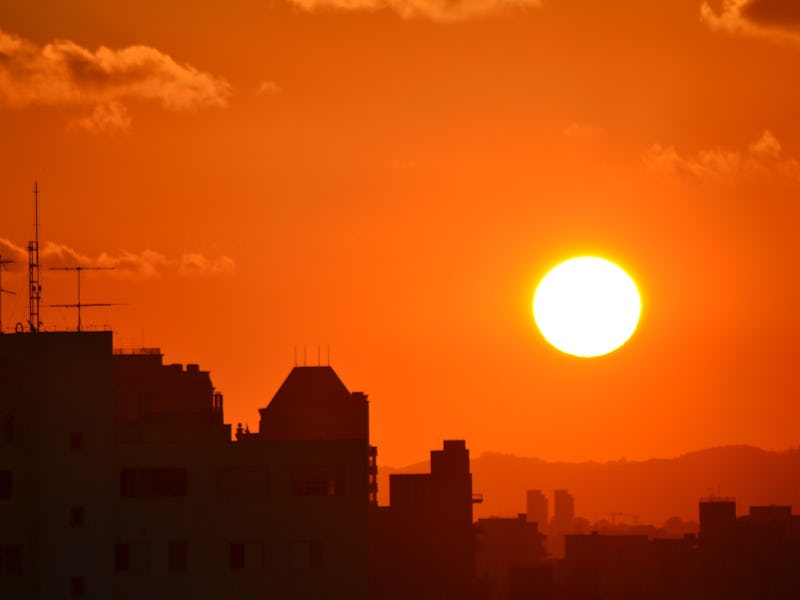Heat Island Effect Doubles Urban Costs of Climate Change
Welcome to the dog days of summer.

The economic costs of a warming urban planet will be two and a half times worse thanks to the heat island effect, which concentrates hot air over densely populated areas. That’s according to a study published Monday in Nature Climate Change, by economists Francisco Estrada, Wouter Botzen, and Richard Tol.
The international research team analyzed 1,692 cities around the world and found that the future costs of climate change jumped 2.6 times when they took the heat island effect into account, compared with running the model as if warming was evenly distributed around the planet.
Urban heat islands are a big deal for two major reasons. For one, more than half the world’s population lives in cities, so what happens there has a major effect on humanity overall. Secondly, the worst impacts of climate change occur at the extremes, when temperatures push higher than what is normal. Even a small heat island effect has the potential to dramatically up the number of very hot days in the city, and it is on those days that economic costs will be most severe.
Heat islands happen for a number of reasons. The most significant is that, when we build cities, we tend to replace naturally cool vegetation with surfaces that absorb and hold heat, like asphalt and concrete. Cars also produce heat, as do all the appliances in urban homes. The net effect is a sort of bubble of warmer air that sits over cities that’s actually significant enough to change the path of jet streams and influence local weather. Dubai, which has urbanized at a dramatic rate in recent years, saw local temperatures jump 3.6 degrees Fahrenheit in just a decade.
Summer days that are significantly hotter than normal are expensive for cities. People have a hard time getting a good night’s sleep — they wake up grumpy and feel unproductive through the day. Levels of violence in both public and private spaces go up. Levels of air pollution rise, with dramatic consequences for public health.
The good news is that the best intervention against heat islands is also the best intervention for better cities — invite nature back in. Rooftop gardens and green spaces undo the heat-trapping effects of urbanization, and can also feed people, clean the air, and provide healthy recreational activities. Certain building materials can also be swapped out so they reflect more energy and keep things cooler. The researchers calculated that switching 20 percent of city roofs and half of city pavements to better surfaces would save 12 times as much as it costs and help turn the urban thermostat down by a degree and a half. That’s a breath of cool, fresh air.
Abstract
Climate change impacts can be especially large in cities. Several large cities are taking climate change into account in long-term strategies, for which it is important to have information on the costs and benefits of adaptation. Studies on climate change impacts in cities mostly focus on a limited set of countries and risks, for example sea-level rise, health and water resources. Most of these studies are qualitative, except for the costs of sea-level rise in cities. These impact estimates do not take into account that large cities will experience additional warming due to the urban heat island effect, that is, the change of local climate patterns caused by urbanization. Here we provide a quantitative assessment of the economic costs of the joint impacts of local and global climate change for all main cities around the world. Cost–benefit analyses are presented of urban heat island mitigation options, including green and cool roofs and cool pavements. It is shown that local actions can be a climate risk-reduction instrument. Furthermore, limiting the urban heat island through city adaptation plans can significantly amplify the benefits of international mitigation efforts.